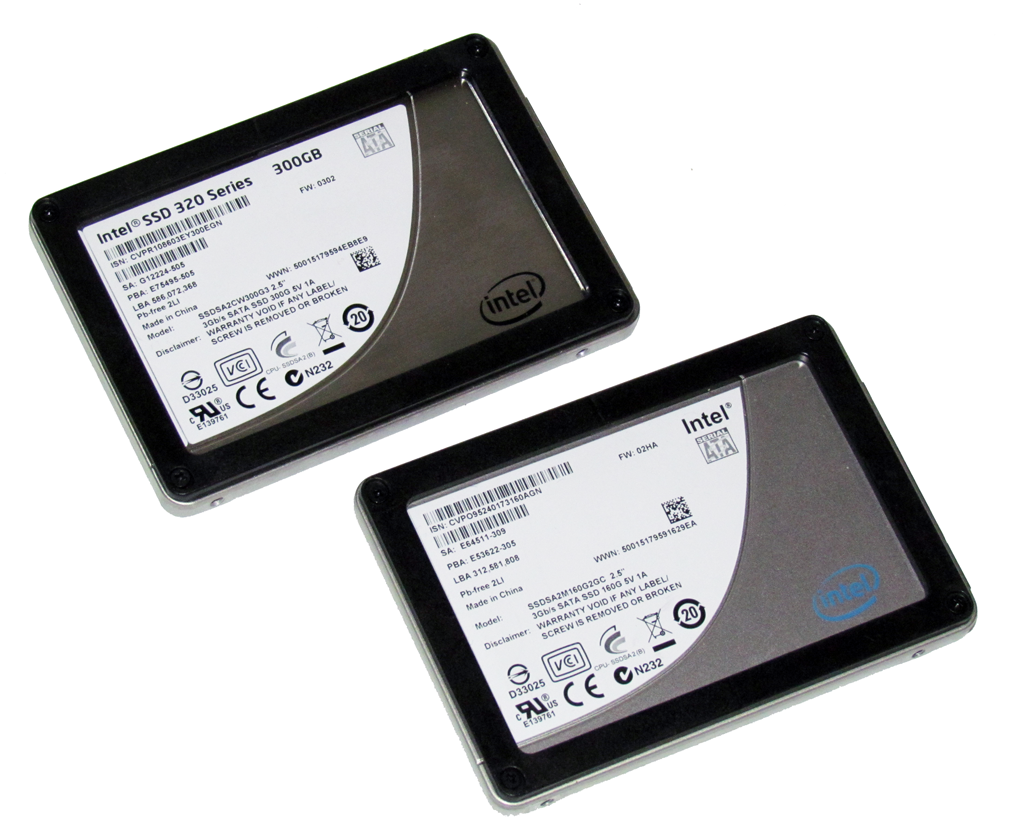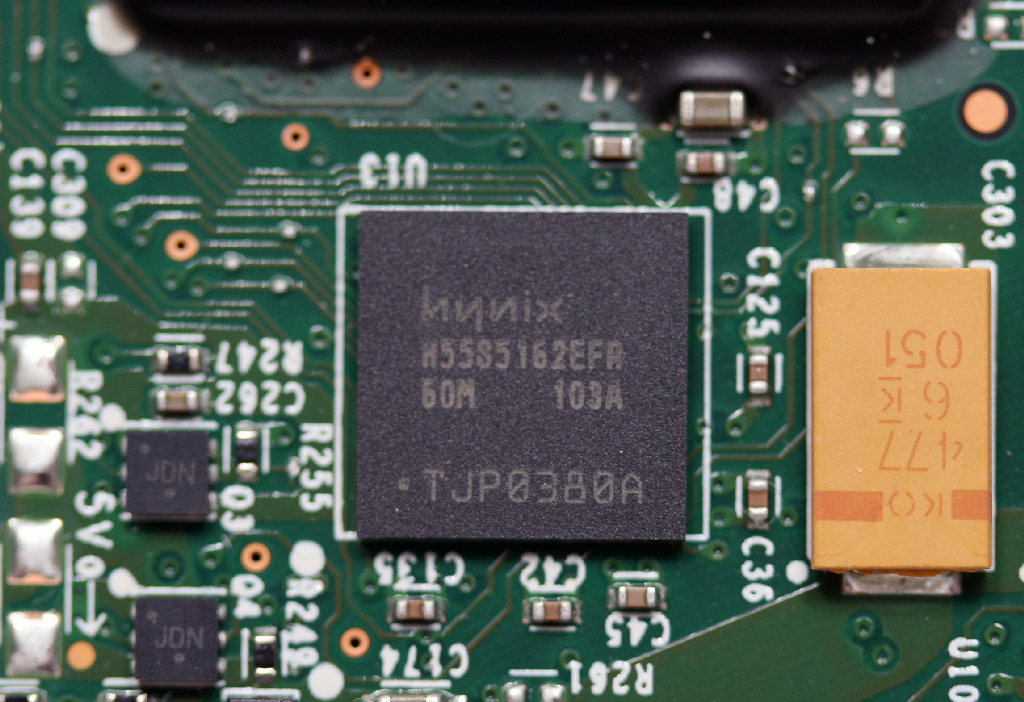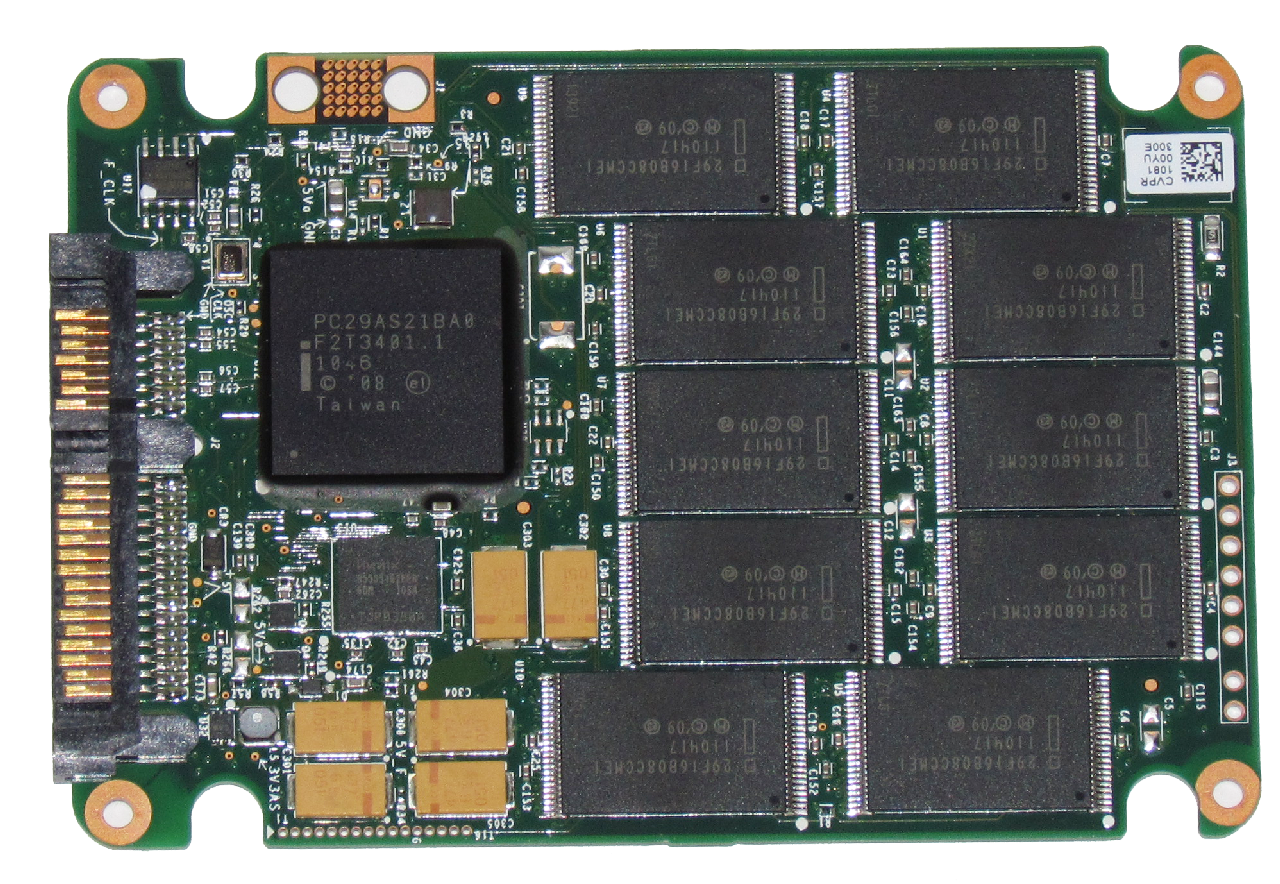Crucial m4 And Intel SSD 320: The Other SSD Competitors
Meet Intel's SSD 320, The Postville Refresh
Intel's SSD 320 Series: Something Old, Something New
Intel claims it continues to be satisfied with its current generation of NAND controllers. That's why it was a surprise to see Intel select a third-party solution to drive its 6 Gb/s drives. But while that covers the high-end space, there isn't as much changing in the mainstream lineup.
Intel's SSD 320 uses the same architectural design as the preceding second-gen X25-M (Intel’s X25-M Solid State Drive Reviewed). Both employ a ten-channel architecture based on Intel's PC29AS21BA0 controller, along with the same write algorithms. This is also the same controller seen on the "Soda Creek" SSD 310. So, what's different?
There are four major changes with the SSD 320 Series.
- 25 nm NAND
- Larger and faster cache
- Improved data parity
- Power protection
Beyond the move to 25 nm NAND, the SSD 320 features a larger cache that runs 33 MHz faster than the X25-M (G2). In combination with ONFI 2.2 NAND, the SSD 320 claims a sequential write performance of 220 MB/s and 4 KB random write performance of 23 000 IOPS. While not nearly as impressive, sequential read performance sees a slight bump to 270 MB/s (about as much as you can hope for over a 3 Gb/s connection). In comparison, random read performance has increased to 39 500 IOPS.
| - | Intel X25-M (G2) | Intel SSD 320 (G3) |
|---|---|---|
| Codename | Postville | Postville Refresh |
| Capacities | 80/160 GB | 40/80/120/160/300/600 GB |
| NAND | IMFT 34 nm MLC, ONFI 2.1 | IMFT 25 nm MLC, ONFI 2.2 |
| Cache | 32 MB DRAM 133 MHz | 40/80 GB: 32 MB DRAM 166 MHz120/160/300/600 GB: 64 MB DRAM 166 MHz |
| Sequential Read | 250 MB/s | 270 MB/s |
| Sequential Write | 100 MB/s | 220 MB/s |
| 4 KB Random Read | 35 000 IOPS | 39 500 IOPS |
| 4 KB Random Write | 8 600 IOPS | 23 000 IOPS |
| Active Power Consumption (max.) | 3 W | 6 W |
| Idle Power Consumption (max.) | 0.06 W | 0.075 W |
| Form Factors | 2.5" & 1.8" | 2.5" & 1.8" |
| Security | ATA Password | ATA Password + AES-128 |
The two other features Intel is focusing on are really the result of influence from the enterprise space. For many smaller or less mission-critical applications, enterprise customers are turning to MLC as a cost-effective way to get the exceptional performance of an SSD without the price tag associated with SLC-based drives. That's why the X25-M ended up selling so well in the enterprise space, and found itself the centerpiece of caching solutions and tiered storage systems. As a result, Intel is now adding features that enterprise customers find important: data parity and power protection.
Intel also introduces a new form of redundancy with the 320 series. When the firmware detects a failed area of NAND, it automatically maps a new physical NAND location into the logical SSD map. Intel claims that there is sufficient space to allow more than an entire die’s worth of blocks to be recovered, a feature not available for the second-gen X25-M. This is more accurately described as analogous to RAID 4 at the NAND “memory band” level.
Get Tom's Hardware's best news and in-depth reviews, straight to your inbox.
The 300 GB SSD 320 sample in our Bakersfield, CA lab has 20 NAND packages, and each package adds 16 GB to the drive's capacity. In total, our 300 GB has 320 GB of raw NAND flash, and like other consumer drives, the SSD 320 series employs ~7% overprovisioning. Hence, this drive is listed as the 300 GB model (279 GiB in Windows). Data parity is already accounted for in the ~7% of over-provisioning.
Separately, Intel adds power loss protection to the SSD 320 drives. But instead of using a super-capacitor, as we've seen from some of OCZ's more enterprise-class drives, the SSD 320 drives use several lower-cost capacitors. This allows Intel to save some board real estate and forgo the cost of an additional component. However, Intel needed to add a detection circuit to complete this design. When a power failure occurs, the circuit sends a signal to the controller on the SSD indicating power loss. The controller then cuts the input power to the drive and uses the remaining power in the capacitors to finish any outstanding transfers in the buffer.
| Intel SSD 320 Series (based on 1,000 unit quantity) | 40 GB | 80 GB | 120 GB | 160 GB | 300 GB | 600 GB |
|---|---|---|---|---|---|---|
| Price | $89 | $159 | $209 | $289 | $529 | $1069 |
| Price per GB | $2.23 | $1.99 | $1.74 | $1.81 | $1.76 | $1.78 |
Arguably, the biggest story isn't what Intel has changed architecturally. It's really about the price tag. When it was first introduced, the 80 GB model of the X25-M (G2) cost roughly $225. Thanks to more competition and more efficient manufacturing, prices have fall around $2 per gigabyte. This is right about where prices for the SSD 320-series also happen to fall. Though, at capacities above 80 GB, there are some really good deals. The 120 GB model costs only $1.74 per gigabyte.
Current page: Meet Intel's SSD 320, The Postville Refresh
Prev Page The Other 2011 Competitors Next Page Meet Crucial's m4, Micron's RealSSD C400-
Could you expand on the Full Disk Encryption capabilities of the Intel 320?Reply
If you can actually use hardware FDE on that drive (rather than just secure erase), that's a winner for me. -
bto Why does the Intel 510 250GB appear to have two scores in crystalmark? (469.4 and 259.7) on the top benchmark on page: "Benchmark Results: CrystalDiskMark Streaming Performance" the specs are identical for both.Reply -
poppasmurf Great lil tidbit, wonder what the difference will be between other SSD's with different interface connections other than physical appearance and the interface connection. More on the lines of pro's and con's between the SSD interface connections I'm referring to the OCZ PCI-e drives vs. SATA 6GB just a thought to stir up the hoop la of ssd's :PReply -
JohnnyLucky I am beginning to wonder if we haven't reached the point where the human eye and brain are finding it harder to differentiate performance among ssd's. Some mainstream benchmarks seem to suggest that. Some of the benchmarks in this review seem to indicate the same. There are some very tight groupings.Reply -
henryvalz At the speed points that SSDs are functioning, I'm beginning to think that durability and reliability might be the best basis for decision. I would also really like to see some boot times from Windows 7, or loading time for games.Reply -
kev_stev Does anyone know when the vertex 3 and M4 are going to actually be available? I have heard rumors that the vertex 3 will be released "any day now" since mid march...Reply -
iamtheking123 I'll go SSD in my next build, probably in a year and a half. Right now I'm satisfied with Raid 0-ed 1TB Caviar Blacks.Reply


